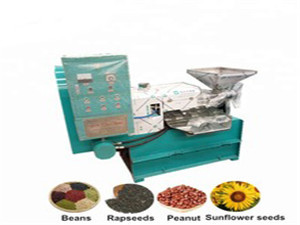
In contemporary peanut oil extraction, pre-treatment plays a pivotal role in maximizing oil yield while preserving the nutritional and functional quality of the by-products. Specifically, the steaming and roasting phase before mechanical pressing requires meticulous control of temperature and duration to prevent protein denaturation—a common challenge that adversely affects cake quality. This guide delves into the operational nuances of steam-roasting peanuts using the ZY24 (202-3) screw oil press, offering actionable insights for small and medium-sized oil extraction plants aiming for optimal processing efficiency and superior output quality.
Pre-treatment steps such as cleaning, crushing, steaming, and roasting significantly influence both the extraction efficiency and the physical properties of the peanut cake. Improper temperature management during steaming and roasting can cause irreversible protein aggregation, reducing the nutritional value and affecting the texture of the residual cake, which is critical for animal feed and other downstream applications.
Industry data suggests that maintaining steaming temperatures within the range of 90°C to 105°C for a duration between 20 to 30 minutes ensures optimal gelatinization of starches without triggering significant protein denaturation. Exceeding these parameters commonly leads to a reduction in oil output by up to 5% and diminishes cake palatability.

Sourcing accurate temperature control settings is vital. Standardized practice recommends a steaming temperature of approximately 95°C sustained for 25 minutes. This balance enables adequate moisture adjustment and partial starch gelatinization, facilitating higher oil release during pressing while safeguarding protein structures.
Temperature spikes above 110°C—even momentarily—can induce excessive Maillard reactions and protein denaturation, resulting in hardened cake consistency and decreased press throughput due to increased mechanical resistance.
| Parameter | Optimal Range | Effects Outside Range |
|---|---|---|
| Steaming Temperature | 90°C - 105°C | Protein denaturation, cake hardening, reduced oil yield |
| Steaming Time | 20 - 30 minutes | Incomplete gelatinization, lower oil extraction efficiency |
1. Raw Material Cleaning: Removal of impurities including shells, stones, and dust is essential to avoid mechanical damage and ensure consistency.
2. Crushing: Uniform crushing enhances contact surface area and accelerates oil release without pulverizing the kernels excessively, which risks dust formation.
3. Steam-Roasting Process: Utilize calibrated steam inputs to reach a steady 95°C inside the roasting chamber. Continue for 25 minutes, adjusting for local humidity.
4. Conditioning: Post steaming, allow the peanuts to rest briefly to balance moisture content (ideal final moisture content is ~6-8%). This mitigates pressing difficulties.
5. Pressing: The ZY24 (202-3) screw press operates optimally when fed with properly conditioned material, ensuring maximal oil recovery rates up to 45-48% for shelled peanuts.

Operators regularly encounter issues such as inconsistent steam temperature or over-roasting. Consistent use of in-line temperature sensors with alarms can reduce human errors and standardize output quality.
Furthermore, if cake hardness increases beyond normal, a reduction in roasting temperature or steaming duration by 5-10% can restore balance. Regular calibration and maintenance of steaming equipment are recommended after every 500 operational hours.
Production logs tracking temperature, time, and humidity enable data-driven optimization and continuous improvement.

Integrating this controlled pre-treatment methodology in your peanut oil production stream will consistently deliver high-quality cakes ideal for animal feed or industrial uses while improving oil extraction rates by 3-5% compared to non-optimized processes.
The ZY24 (202-3) screw press benefits particularly from this harmonized approach, reducing mechanical wear and downtime significantly thanks to the homogenized feedstock condition.
Cultivating operator proficiency through regular training and leveraging detailed checklists can further elevate production consistency and product standards.
Ready to optimize your peanut oil extraction process and boost cake quality with expert guidance?
Download Our Comprehensive Pre-Treatment Operation Checklist

